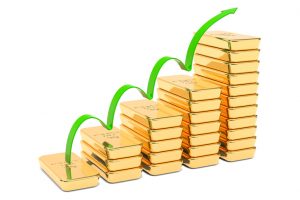Greenspan: Rising Gold Price Shows Investors Want Hard Assets That Will Increase in Value
The comments below are an edited and abridged synopsis of an article by Tyler Durden
During a CNBC interview, former Fed Chairman Alan Greenspan said gold prices are surging because investors are looking for hard assets that will have value in 20 or 30 years. Gold is up more than 21% on the year.

Greenspan focused on an interesting fundamental he thinks is driving both the bond and gold markets—the aging population. He said there has been a shift as people recognize they will likely live longer, and they will need to finance those longer lives. This, he says, is increasing the demand for hard assets like gold.
“One of the reasons that the gold price is rising as fast as it is… that’s telling us essentially that people want hard resources which they know are going to have a value 20 years from now, or 30 years from now as they age, and they want to make sure they have the resources to keep themselves in place. That is a clearly fundamental force that is driving this.”
Historically, gold has served as an inflation hedge and a wealth preserver. It makes sense that investors, concerned about maintaining their savings, would turn to gold. This is especially true given the likelihood of increasing inflation as the Fed continues to try to prop up the economy with low interest rates and QE.
Greenspan also talked about negative interest rates. He said the aging population is an underlying factor in falling bond yields. An aging population is driving demand for bonds, pushing up the price and driving down yield. He says he expects to see negative yields in the US.
There is now more than $15 trillion in negative-yielding debt globally.
Former Reagan OMB director David Stockman had another take on falling bond yields: “What we’re seeing is rampant speculation in the bond market. Investors are banking on continued bond-buying by central banks. They believe this will continue to push prices up, and they’re speculating on the rising prices. It’s nothing but a massive bond-market bubble.”
